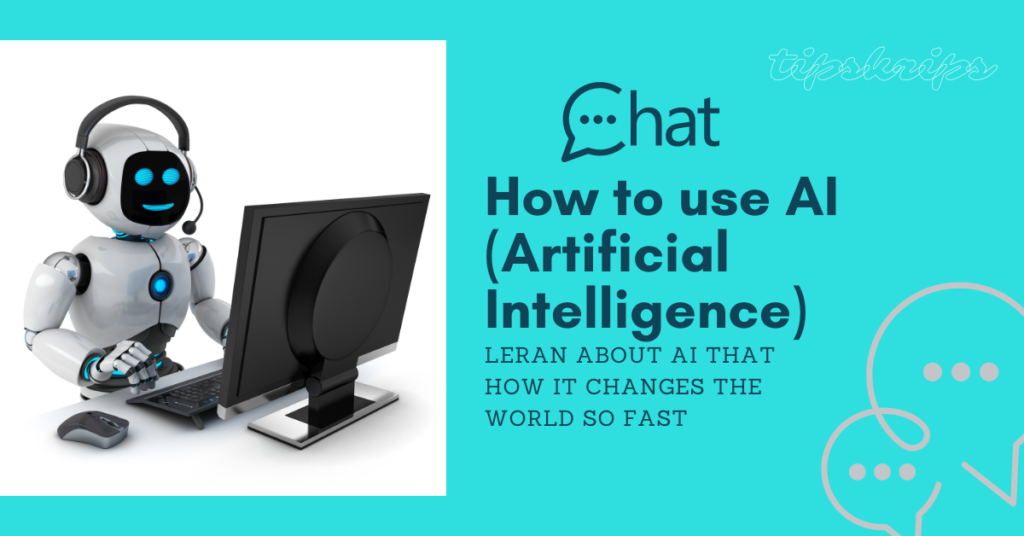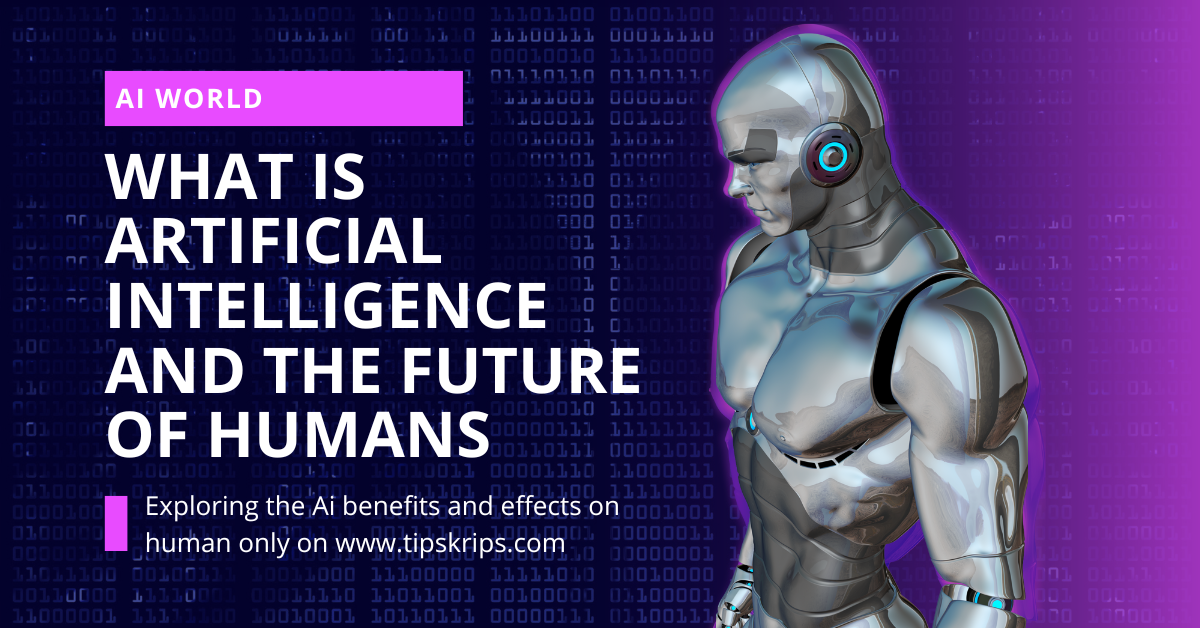Some people want to change the world through robotic life. Artificial intelligence is one of the big examples of it as it takes the place of the human. It has done all the work through one click, while humans take much time. How things are done in the world could be totally changed by artificial intelligence.
What do you think? Is this the future we deserve? Nearly all facets of our lives can benefit from AI. Why is AI now so important to us? Why is AI necessary? That technology takes the place of the human. It’s not good. It shows that malevolent artificial intelligence emerges with plans to take over the universe. Mostly, people ask why AI is important in our lives and what specifications it is.
“Artificial intelligence (AI) leads to changing the world into robotic life.”
Most people still need to learn about AI and how AI changes the world. AI is very important now in everyone’s lives. People are more relaxed after using it, and its trend gradually increases as time goes by. There is no chance of slowing it down. It has become a trending topic in today’s world.
“No doubt AI has changed the world and taken the place of humans but you have to know that AI is a machine and humans have full control over it”.
What is Artificial Intelligence?
AI is abbreviated as Artificial intelligence. An algorithm or process tells the computer what to do and how to do it. It thinks like a human, but it is software made by some intelligence. It is also called a robot, which tells the computer what to do. Anyone and the query is answered like a human. AI is designed like a human brain. How humans think and analyze things and all functions installed in them due to this functionality is called Artificial intelligence (AI).
What are Strong AI and weak AI:
How has artificial intelligence changed the world with two different types? It is usual to distinguish between weak AI and strong AI. Let’s examine each type’s attributes in more detail:
| Weak Ai | Strong Ai |
| Weak Artificial intelligence stays within narrowly specified parameters and cannot generalize. | Strong AI development is still mostly theoretical and has yet to be completed. |
| These AI systems do their assigned tasks exceptionally well but lack general intelligence. | It describes AI systems that are only capable of carrying out certain tasks. |
| It is usually called general AI and describes AI systems that are intelligent enough to compete with or even outperform humans in various tasks. | Strong AI would be akin to human cognition because it could comprehend, reason, learn, and use the information to solve complicated problems. |
| Voice assistants like Siri or Alexa, recommendation algorithms, and image recognition systems are a few examples of weak AI. | ChatGpt is an example of strong AI (Artificial Intelligence) |
Types of AI (Artificial intelligence)
The future of AI will change the world so fast. Many AI types are listed below:

1. Future AI Initially Reactive:
Due to their narrow expertise, these machines need more memory or data. For instance, when playing a game, the computer watches the moves and chooses the move that will give it the best chance of winning.
2. Small Memory
To improve, these robots continually add to their memory by collecting new information. Although their memory is limited, they have enough experience or knowledge to make wise decisions. This system can, for instance, advise a restaurant based on the collected location information.
3. The Concept of Mind
AI is software, not a human, so it doesn’t catch emotions. There is no such machine that has yet been constructed.
4. Self-Awareness
This type of AI is intelligent and conscious, but it comes in the future technology, not now. It is the future AI type.
How to use AI and How AI Works:
Artificial intelligence (AI) systems function by combining sophisticated iterative algorithms, which are powerful computing resources. Following the Sequence and functionality found in the examined data, AI can learn from this arrangement. The performance evaluation and verification of an artificial intelligence system are conducted following each data processing round, wherein the results are utilized to explore novel applications for artificial intelligence.
Techniques for Using Artificial Intelligence AI
There are many ways to use AI and how AI changes the world so fast. Let’s look at the following examples of how we can use AI.
Learning Machines:
AI is changing the world so fast that it’s a machine learning system. It is software that only understands binary language or machine language. Algorithms are used to do this by using the content they are exposed to for patterns and insights.
In-depth Learning
AI changes the lives of humans. It can simulate the network of the human brain. Deep learning is very important. It is the branch of machine learning. This is the step through which AI learns how to react and think like a human, and then AI makes a pattern of how to answer with proper understanding. We use AI deep learning to separate the various image types.

The computer uses AI. Deep learning is a method known as feature extraction. It’s a type of AI that sorts through different photographic features and identifies them like a pro. Future AI will change the lives of humans through its excellent features. Based on its characteristics, the computer divides each photo into many categories, such as surroundings, self-portraits, etc. This is how AI deep learning extracts and changes features from photos.
Images segregate and pass from these three layers
- Input Layer
- Output Layer
- Hidden Layer
Input Layer
The input layer takes the photos that we wish to segregate. Arrows drawn on the image have dots on each input layer. Each image is represented by white dots as pixels in a layer of yellow.
These photographs fill the white dots of the input layer. Reading this artificial intelligence course, we should fully know these three layers.
Hidden Layers
The hidden layers carry out all of our inputs’ mathematical computations or feature extraction. The layers highlighted in orange in the image above stand in for the layers that are not visible. ‘Weights’ are the lines that may be observed separating these strata. The value of the input layer is often multiplied by a decimal or float number in these. All the weights are added up in the concealed layer. The dots in the buried layer represent a value obtained by summing the weights. These values are then transferred to the subsequent concealed layer.
You may be wondering why there are so many layers. The hidden layers act in some ways as replacements. The hidden layers act as replacements in various ways. The hidden layers act in some ways as replacements.
More complicated data inputs and outputs are possible with more hidden layers. The intricacy of the input data and the number of hidden layers determine how accurately the output can be predicted.
Output Layer
We get segregated images from the output layer. After adding up all these weights, the layer will determine whether the image is a portrait or a landscape. For example, Predicting the cost of airfare.
This forecast is dependent on some variables, such as:
First airport, Airline, airport of arrival, and Date of departure
To teach the machine, we use past information on ticket prices. Once our system has been trained, we will provide updated information with cost projections.
We discussed machines with memory earlier when we learned about the four kinds of machines. Here, we discuss the memory alone and how it recognizes a pattern in the data and applies it to forecast the new pricing, as illustrated below:
How does the future of AI change the world? See its pros and cons:
Artificial intelligence has many advantages and disadvantages, like every other idea or breakthrough. Here is a quick list of some benefits and drawbacks of AI.
Benefits of AI (artificial intelligence)
- It can be done quickly.
- AI makes research work easy for human
- Human mistake is decreased because it works like a tutor.
- It is 24 hours available because it’s a humanoid robot, not human
- It does boring projects easily and is never bored because it lacks emotions
Cons of AI (artificial intelligence)
- Future of Ai finishes the jobs
- it gives many bugs and duplicate content
- It never compares with human innovation
- It can cause people to become too dependent.
- The actual execution of it comes at a high expense.
- Unemployment will result since some jobs will undoubtedly be replaced.






